How Much Does Bowing Basement Wall Repair Cost?
- Walls that have bowed more than three inches – If your wall has bowed more than three inches, experts can use wall plate anchors or c-channel anchors to stop the movement and pull the wall back outward. These anchors are priced per anchor/plate and average around $800 to $1,000. Wall plate anchors are placed four feet from the corner of your basement, positioned every four to six feet from each plate.
- Walls that have bowed less than three inches – If your basement wall has bowed inward less than three inches, experts can use carbon fiber straps to stabilize and stop the movement. Fortress Invisibeam carbon fiber straps are the most favorite and preferred method for repairing bowing walls. These straps are about $900 per strap and are placed every five feet from each other.
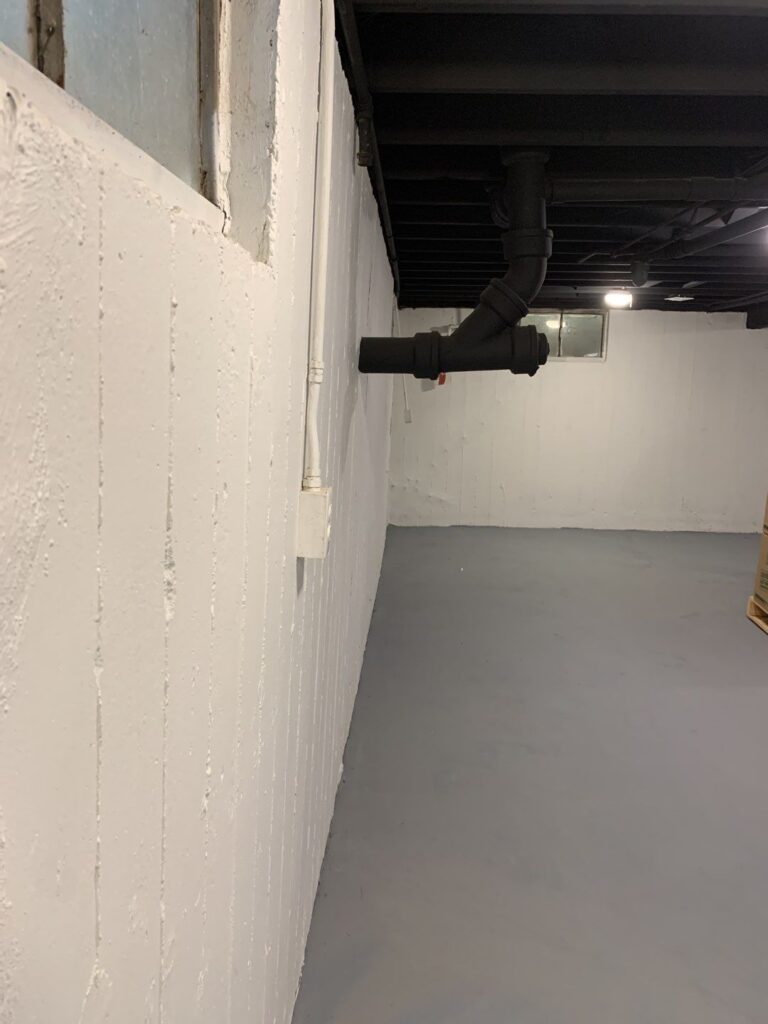
Wall Plate Anchors
Wall plate anchors stop movement by anchoring in the soil so that the wall cannot movei inwards. Here’s how the installation process works.
- Foundation repair professionals dig around your basement wall so that dirt doesn’t get in the way once it’s pulled outward.
- Anchors are placed in a trench 13 feet away from your wall.
- If your bowing wall is cracked into multiple sections, carbon fiber straps are installed as well to ensure the concrete moves together.
- Holes are then drilled into your bowing basement wall. This is where threaded high-strength steel rods are inserted to connect the anchors to the wall plates.
- If needed, hydraulic jacks lift up your home, taking pressure off your basement wall, allowing it to move easier.
- The wall plates are attached to your bowing basement wall, connecting to the rods and outside anchors.
- Lastly, the wall plates are tightened at the same time using a torque wrench, pulling your wall outward.
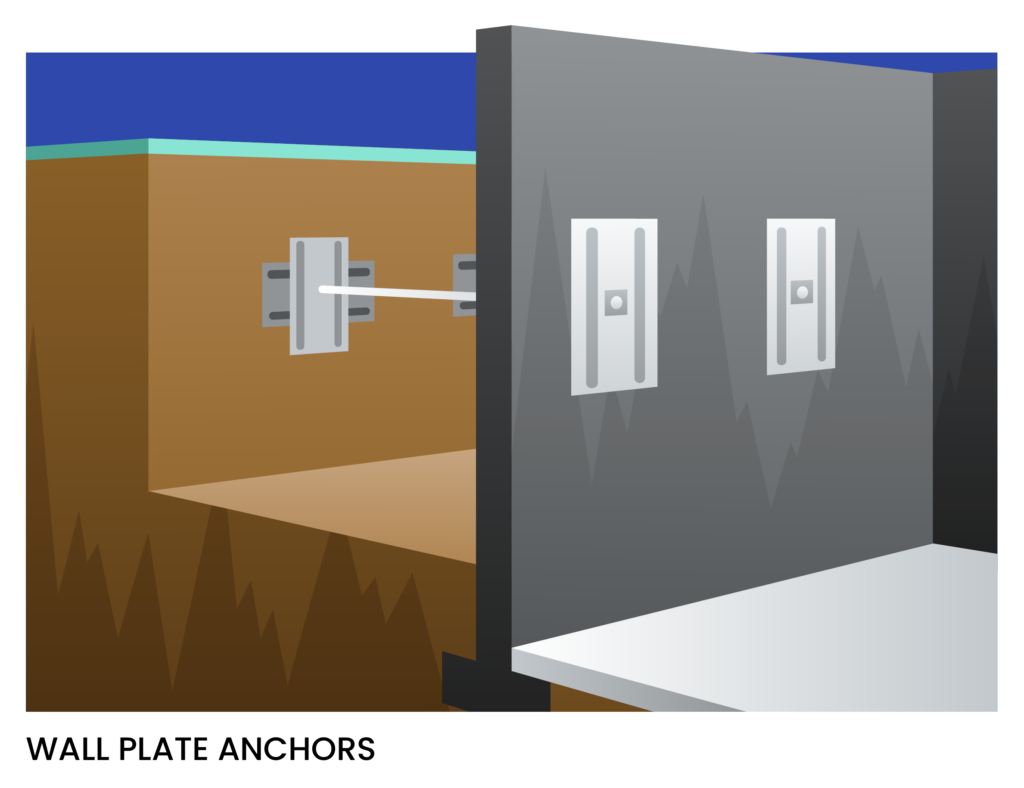
C-channel Anchors
These anchors use long steel beams to stabilize your bowing or shearing basement wall. Shearing means that the top of the wall is moving inward while the bottom of the wall stays put. Here’s how the process works.
- Large steel beams are attached to your bowing or shearing wall, placed every four to five feet from each other.
- Anchors are placed in an outside trench 13 feet away from your basement wall.
- Threaded rods are inserted into holes along your basement wall, connecting to the outside anchors.
- The steel beams and outside anchors are connected and torqued, pulling your wall outward.
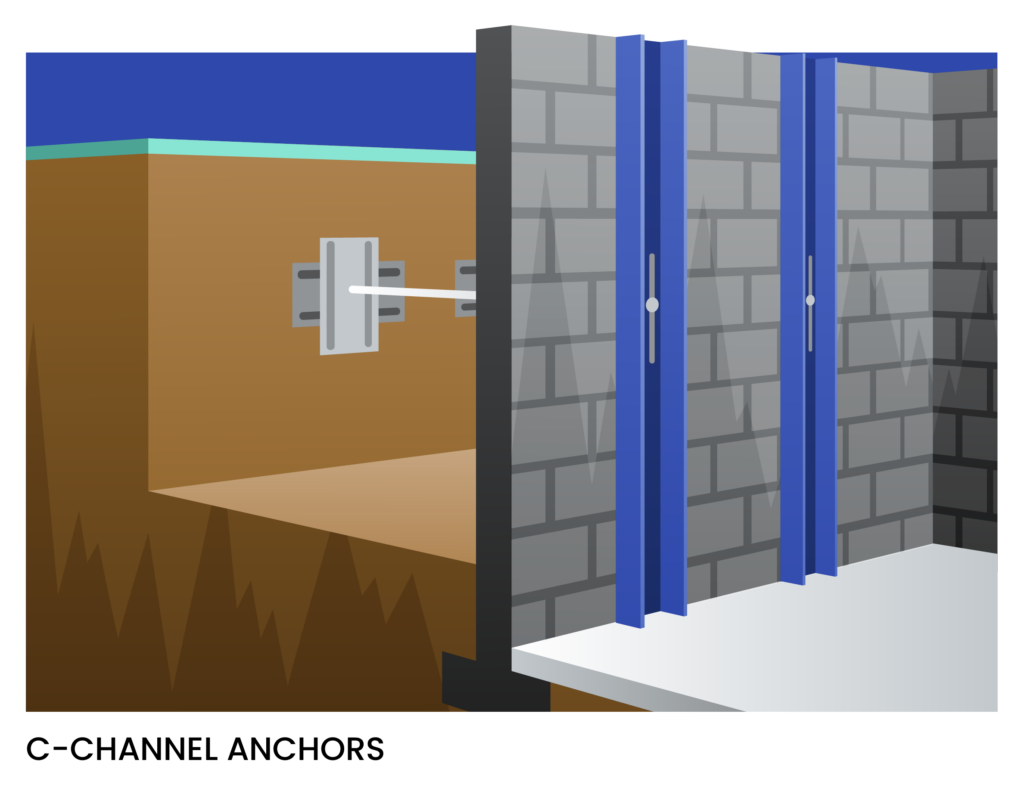
Fortress Invisibeam Carbon Fiber Straps
These carbon fiber straps can repair bowing and shearing walls that have moved inward less than three inches. These carbon fiber straps are incredibly strong and virtually unbreakable. Here’s how the process works.
- A galvanized bracket is anchored to the beams at the top of your foundation.
- The straps are placed against your bowing or shearing wall using epoxy and hundreds of small epoxy rivets. This cements your straps to your concrete wall, creating a stronger bond.
- The bottom of the straps are anchored to your foundation footer, securing them in place.
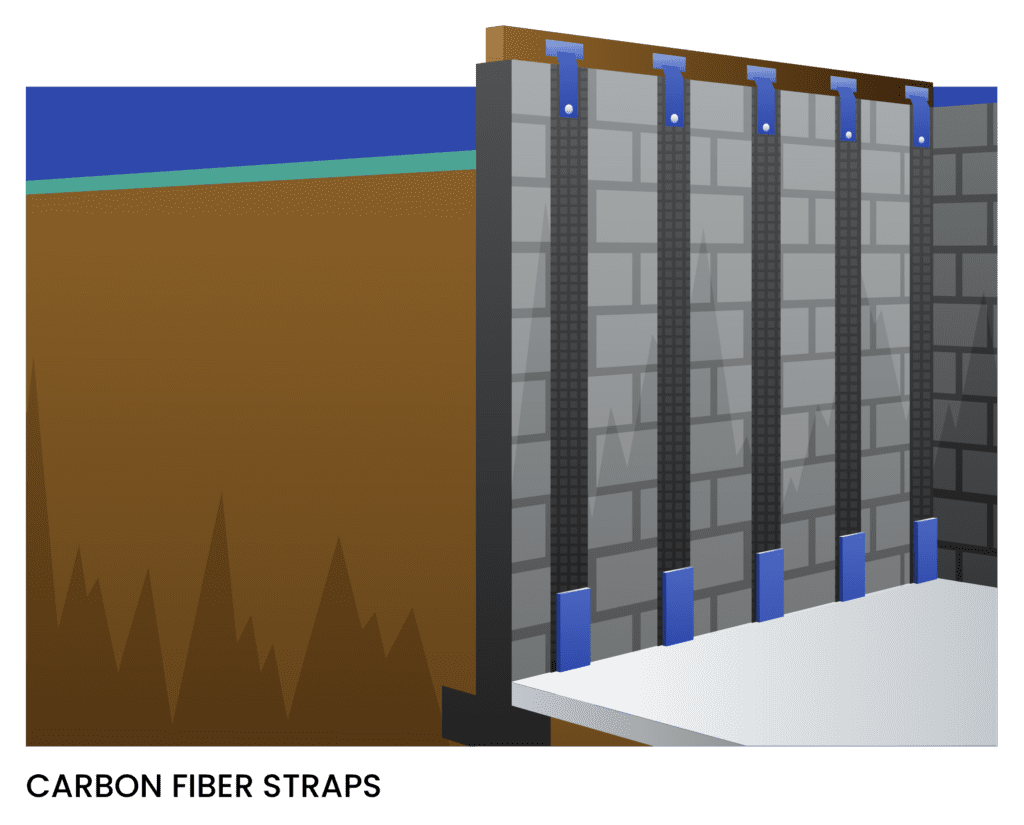
What Causes Bowing Basement Walls?
- Expansive soil – Expansive soil swells and shrinks based on moisture content. If the soil outside your basement walls swells, pushing against your walls, it can cause them to bow.
- Hydrostatic pressure – If water builds up around your basement, the increase in soil volume can heave against your walls, causing them to bow.
- Frost-heaving – Two things can happen if the soil outside your basement wall freezes.
- The soil volume can increase and push against your walls, causing them to bow.
- The soil can rise when it freezes and settle back down as it thaws. This up-and-down movement can place pressure on your walls, causing them to bow.
- Lateral outside pressure – If a heavy object is placed directly outside your basement walls on top of the soil, the pressure can push down and cause your walls to bow.
Who Offers Bowing Basement Wall Repair Near Me?
If you live in the Greater Chicago area and have bowing walls, you should call The Real Seal. Our team of experts will get you started with an in-depth inspection, free repair estimate, and a list of our finest solutions. We also provide basement waterproofing, crawl space encapsulation, crawl space repair, concrete leveling, and more.
Please note that the prices referenced in this blog have not been updated since publication and may differ from current prices. Current price estimates are available upon request.
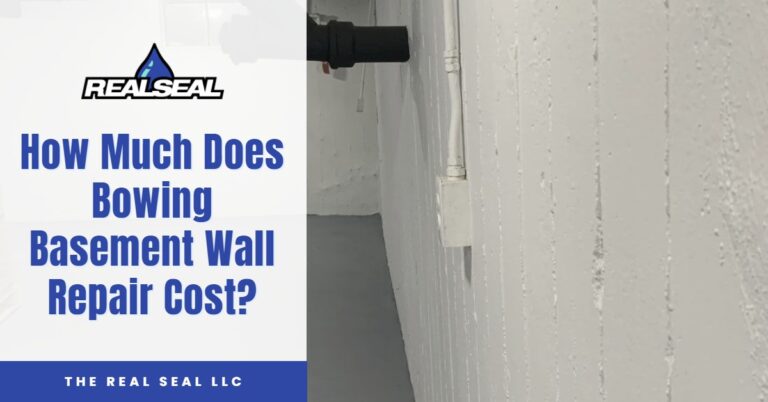
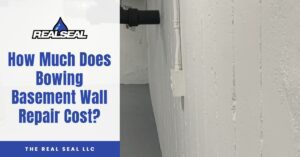





2 Responses
Very well written Austin. I’m a home inspector here outside of Cleveland Ohio so I can’t get you much business but can I republish your blog with credit given?
Hi Scott, thanks so much! Sounds good to me, just include a clickable link where you republish so people can see where it’s from.